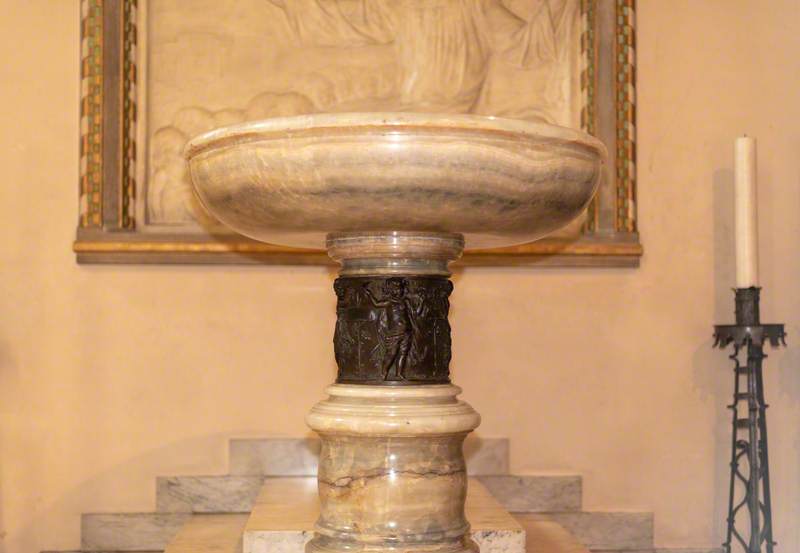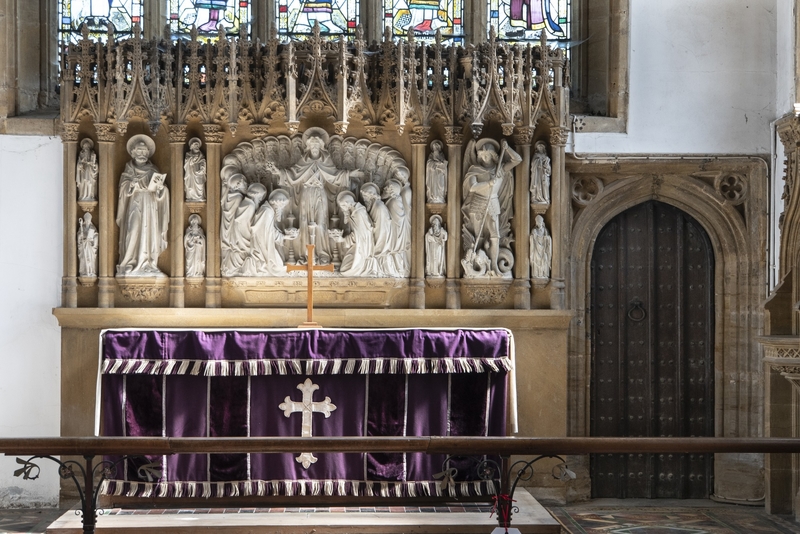
John Dando Sedding (1838–1891) and Frank Bowcher (1864–1938)
John Dando Sedding [also known as J.D. Sedding] was born in Eton, Berkshire, England on 13 April 1838 and from 1858 to 1863 was articled to George Edmund Street (1824-1881) along with his elder Brother Edmund Sedding (1836-1868). In 1865 he worked in partnership with Edmund in Penzance, Cornwall. Following the death of Edmund, he moved to Bristol in 1868 and then, in 1874, to London where he established an office at 18 Charlotte Street. In 1880 relocated the office to 447 Oxford Street, next door to Morris & Co. In 1872 Sedding married Rose Catherine Tinling (?-1891), the daughter of Edward Douglas Tinling, canon of Gloucester, who was to provide him with his first important commission, St Clement's Church in Bournemouth, Dorset in 1872.
Subsequently the design and restoration of churches was to become a mainstay of Sedding's practice. Notable among the new churches he designed were St Clement's in Boscombe, Dorset (1871–73); St Augustine of Canterbury in Highgate, London (1884); St Dyfrig's in Cardiff, Wales (1885–93; St Elwyn's in Hayle in Cornwall. (1886–88); Our Most Holy Redeemer in Clerkenwell, London (1887); All Saints' in Falmouth, Cornwall (1887–90); St Peter's Church in Ealing, London (1889); Holy Trinity in Chelsea, London (1888-90). Churches restored or for which he designed additions included St Mary's Church in Stogumber, Somerset (1872–75). All Saints in Holbeton, Devon (1885–87); SS Peter and Paul in Ermington, Devon (1889–90); and St Mary's Church in Stamford, Lincolnshire (1890).
By 1880 Sedding had an office in Oxford Street, London. In 1888 he moved his personal residence from Charlotte Street, London to West Wickham in Kent where he developed an interest in gardening and garden design.
In addition to his work as an architect, Sedding was also a decorative designer. His designs included wallpaper, embroidery, art metalwork and church furnishings. He exhibited on numerous occasions at the Royal Academy in London between 1875 and 1891. He also exhibited at the Royal Glasgow Institute of the Fine Arts.
Sedding was elected a Fellow of the Royal Institute of British Architects (FRIBA) in 1874. He was a founding member of the Art Workers Guild in 1884 and was Master of the AWG in in 1886-87. He was the author of three books, Suggestions for House Decoration (1880), Garden-Craft Old and New (1891) and Art and Handicraft (1893). The last two books were published posthumously.
Sedding died suddenly on 7 April 1891 at Winsford Vicarage in Somerset, where he was engaged on restoration work.
Text source: Arts + Architecture Profiles from Art History Research net (AHRnet) https://www.arthistoryresearch.net/
